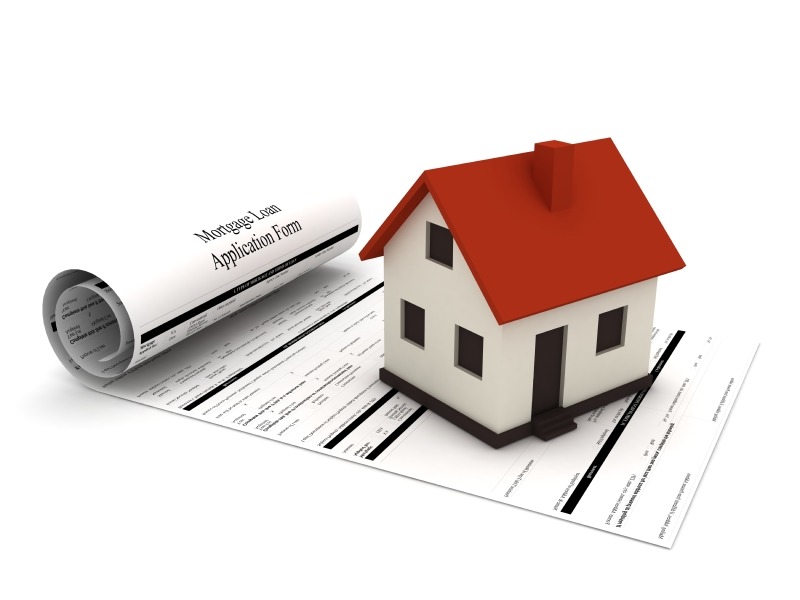
Mortgage Loans
A mortgage loan is a loan secured by real property through the use of a document which evidences the existence of the loan and the encumbrance of that reality through the granting of a mortgage which secures the loan. However, the word mortgage alone, in everyday usage, is most often used to mean mortgage loan.
A home buyer or builder can obtain financing (a loan) either to purchase or secure against the property from a financial institution, such as a bank, either directly or indirectly through intermediaries. Features of mortgage loans such as the size of the loan, maturity of the loan, interest rate, method of paying off the loan, and other characteristics can vary considerably.
In many countries, though not all, it is normal for home purchases to be funded by a mortgage loan. Few individuals have enough savings or liquid funds to enable them to purchase a property outright. In countries where the demand for home ownership is highest, strong domestic markets have developed.
Mortgage Loan Types
There are many types of mortgages used worldwide, but several factors broadly define the characteristics of the mortgage. All of these may be subject to local regulation and legal requirements.
-
Interest: interest may be fixed for the life of the loan or variable, and change at certain pre-defined periods; the interest rate can also, of course, be higher or lower.
-
Term: mortgage loans generally have a maximum term, that is, the number of years after which an amortizing loan will be repaid. Some mortgage loans may have no amortization, or require full repayment of any remaining balance at a certain date, or even negative amortization.
-
Payment amount and frequency: the amount paid per period and the frequency of payments; in some cases, the amount paid per period may change or the borrower may have the option to increase or decrease the amount paid.
-
Prepayment: some types of mortgages may limit or restrict prepayment of all or a portion of the loan, or require payment of a penalty to the lender for prepayment.
The two basic types of amortized loans are the fixed rate mortgage (FRM) and adjustable rate mortgage (ARM) (also known as a floating rate or variable rate mortgage). In many countries, floating rate mortgages are the norm and will simply be referred to as mortgages; in the United States, fixed rate mortgages are typically considered “standard.” Combinations of fixed and floating rate are also common, whereby a mortgage loan will have a fixed rate for some period, and vary after the end of that period.
In a fixed rate mortgage, the interest rate, and hence periodic payment, remains fixed for the life (or term) of the loan. In the U.S., the term is usually up to 30 years (15 and 30 being the most common), although longer terms may be offered in certain circumstances. For a fixed rate mortgage, payments for principal and interest should not change over the life of the loan, although ancillary costs (such as property taxes and insurance) can and do change.
In an adjustable rate mortgage, the interest rate is generally fixed for a period of time, after which it will periodically (for example, annually or monthly) adjust up or down to some market index. Common indices in the U.S. include the Prime rate, the London Interbank Offered Rate (LIBOR), and the Treasury Index (“T-Bill”); other indices are in use but are less popular.You can select the mortgage loan you require when interest rates are quite low and get it adjusted throughout the loan term.
Adjustable rates transfer part of the interest rate risk from the lender to the borrower and thus are widely used where fixed rate funding is difficult to obtain or prohibitively expensive. Since the risk is transferred to the borrower, the initial interest rate may be from 0.5% to 2% lower than the average 30-year fixed rate; the size of the price differential will be related to debt market conditions, including the yield curve.
Additionally, lenders in many markets rely on credit reports and credit scores derived from them. The higher the score, the more creditworthy the borrower is assumed to be. Favorable interest rates are offered to buyers with high scores. Lower scores indicate a higher risk for the lender, and higher rates will generally be charged to reflect the (expected) higher default rates.
A partial amortization or balloon loan is one where the number of monthly payments due is calculated (amortized) over a certain term, but the outstanding principal balance is due at some point short of that term. This payment is sometimes referred to as a “balloon payment” or bullet payment. The interest rate for a balloon loan can be either fixed or floating. The most common way of describing a balloon loan uses the terminology X due in Y, where X is the number of years over which the loan is amortized, and Y is the year in which the principal balance is due.
